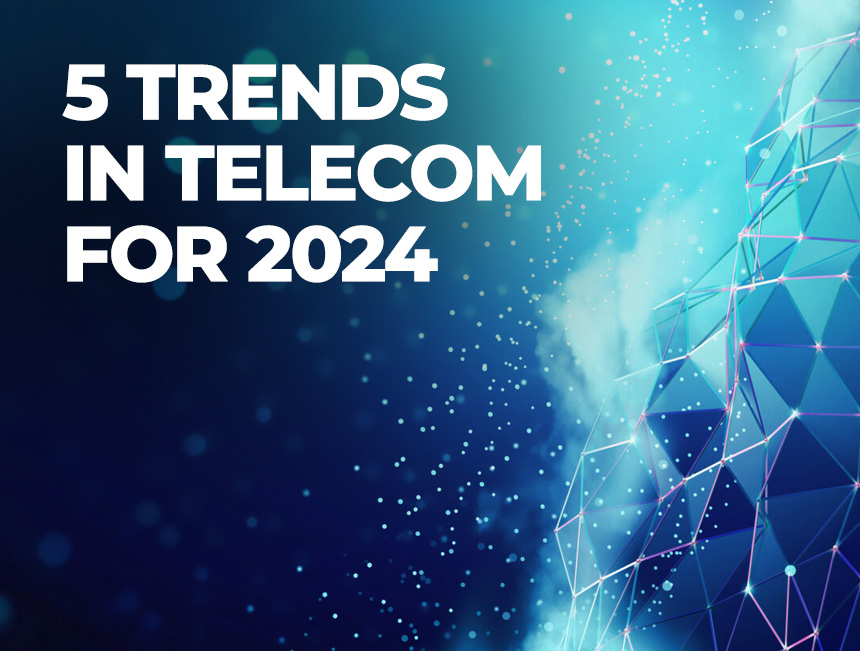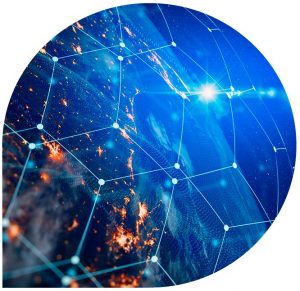We take a look at some of the industry trends and highlights for the year. From environmental responsibility to artificial intelligence and more, here are five trends in telecom for 2024.
5 TRENDS IN THE TELECOM INDUSTRY
Environmental responsibility
Environmental responsibility in telecommunications is essential as the sector plays a key role in global connectivity and information exchange. Its rapid evolution, especially with the deployment of 5G networks, poses significant environmental challenges.
To address these concerns, it is essential to adopt innovative approaches and adopt responsible practices that minimise the environmental impact of telecommunications.
A vital aspect of environmental responsibility in the telecom sector is the transition to “Net Zero” with renewable energy. This implies a commitment to powering telecommunications infrastructure, including macro sites and small cells, with renewable energy sources.
By adopting solar, wind or other sustainable energy solutions, the sector can significantly reduce its carbon footprint. This shift not only aligns with global sustainability goals, but also positions the telecoms sector as a responsible steward of the environment.
As telecommunications moves forward, the integration of net zero renewable energy solutions serves as a beacon for environmental responsibility. This commitment not only reflects awareness of the industry’s impact on the environment, but also lays the foundation for a more sustainable and environmentally friendly future in an interconnected world.
Cybersecurity
In a rapidly evolving technology landscape, cybersecurity remains a primary concern, especially with the emergence of Web3 and blockchain technologies. While these innovations promise decentralisation, greater security and improved data integrity, they also introduce their own set of cybersecurity challenges.
Web3 technologies have the potential to improve cybersecurity in telecommunications by decentralising data storage and communication protocols. The use of blockchain, a key component of Web3, can provide a secure and transparent framework, reducing the risk of centralised cyber-attacks.
Smart contracts, an integral part of Web3, enable automated and tamper-proof agreements, improving the integrity of communication processes. In addition, decentralised identity solutions in Web3 can strengthen user authentication and access control, mitigating vulnerabilities associated with centralised databases.
By incorporating these innovations, Web3 contributes to a more resilient and secure telecommunications infrastructure, safeguarding sensitive data and communication channels from evolving cyber threats.
Artificial intelligence and automation in telecommunications
The integration of artificial intelligence (AI) and automation is revolutionising telecommunications network management. AI-based technologies play a key role in optimising network operations, predictive maintenance and improving customer service.
Predictive maintenance of telecommunications networks, powered by artificial intelligence (AI), is a transformative approach that anticipates equipment failures before they occur. AI analyses large amounts of data from network components, identifying patterns and potential problems.
This proactive strategy allows telecom operators to schedule maintenance precisely when it is needed, thus avoiding costly downtime. Using machine learning algorithms, AI continuously refines its predictions, adapting to evolving network conditions. This not only increases the reliability of the telecommunications infrastructure, but also minimises operational costs and improves the overall quality of service.
This synergy fosters a proactive approach to network management, minimising downtime, improving overall performance and elevating the customer experience. The marriage of AI and automation propels telecommunications into an era of intelligent, self-optimising networks that meet changing demands with unprecedented efficiency and reliability.
The future of communications
The future of communications promises a paradigm shift with the advent of cutting-edge technologies. Holographic calls, a concept once confined to science fiction, are becoming a reality. This innovative technology enables realistic, three-dimensional conversations, overcoming the limitations of traditional video calls.
Advances in telepresence are transforming the way we connect. Enhanced by virtual reality and augmented reality, telepresence technologies offer immersive experiences that allow users to feel physically present in distant locations. This has profound implications for remote work, education and collaboration.
These futuristic communication technologies have the power to redefine the nature of human interaction. They not only improve the quality and authenticity of remote communication, but open up new possibilities for global collaboration, education and healthcare.
As these innovations continue to evolve, the future of communications promises a more interconnected and immersive world, where geographical distances are shortened and meaningful connections are forged through unprecedented technological advances. The transformative impact of these technologies is poised to shape a future where communication transcends borders and reaches new heights of sophistication and accessibility.
Net neutrality and data privacy
Net neutrality rules provide a fundamental framework for maintaining an open and equal internet environment. These rules prevent internet service providers from engaging in unfair practices, such as prioritising certain types of traffic or creating “fast lanes” for specific services. By ensuring that all online content is treated equally, net neutrality promotes fair competition, protects consumers and encourages innovation.
The relationship between net neutrality and data privacy is intertwined. Without net neutrality, there is a risk of ISPs potentially interfering with internet traffic, compromising user privacy. When net neutrality is compromised, ISPs could exploit their role as gatekeepers, selectively limiting or blocking content. This not only undermines the principles of a free and open internet, but also poses a threat to individual privacy.
European Union (EU) rules on open internet access give end-users the right to make available and disseminate lawful content and services through their internet access service. These rules emphasise the principle of non-discriminatory traffic management, with provisions for reasonable exceptions and specialised services by providers, subject to specific safeguards. This framework aims to ensure fair access, uphold users’ rights and strike a balance between non-discrimination and the potential of specialised services in the area of Internet provision.


